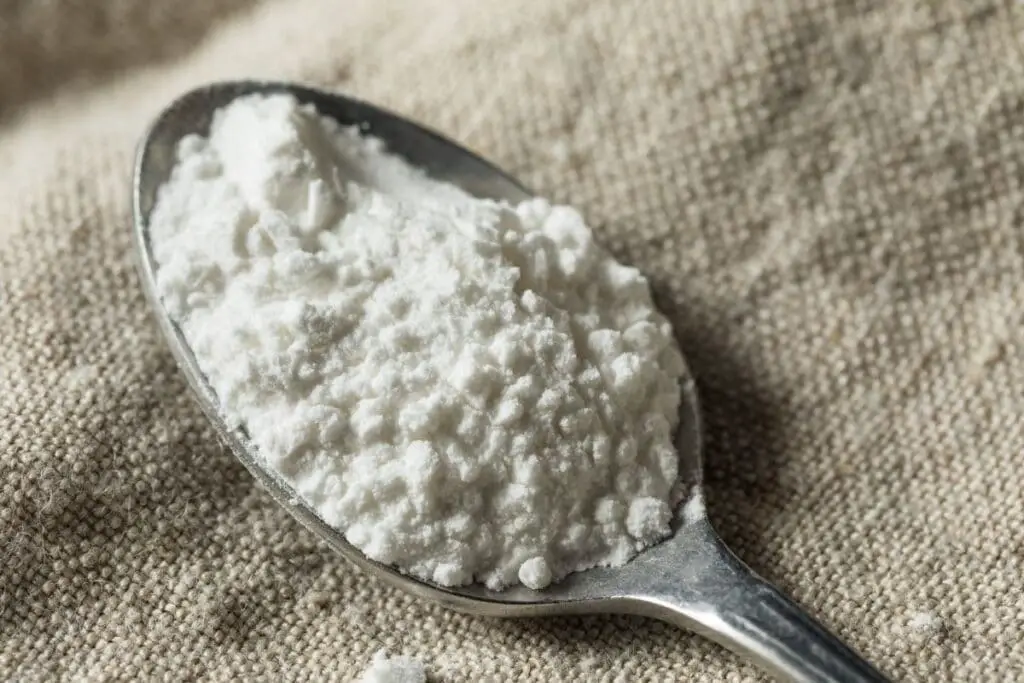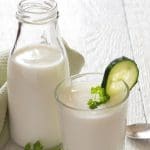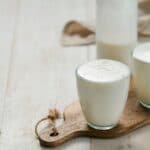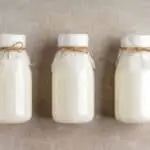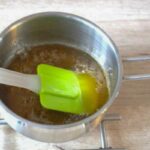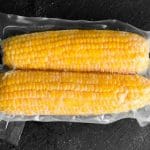Key points:
- Egg whites can be stabilized without cream of tartar using pure white vinegar or lemon juice and replacements for preventing crystallization, like corn syrup.
- As a raising agent, cream of tartar can be replaced with baking powder, vinegar or lemon juice, buttermilk or yogurt.
If you’re an avid baker you will most likely come across a few recipes that require cream of tartar. This fine white powder can bring a little magic to your confections by stabilizing structures and contributing to light, fluffy bakes. You only need a small amount, but that little bit can make a big difference to the science behind your cake’s luscious characteristics.
If you don’t have any in the panty, here’s a list of the best tartaric acid substitutes you can use to get those same masterful results. Keep in mind that the cream of tartar substitute you use will depend on what you are baking and how it is used in the recipe.
What is Cream of Tartar?
Its name may sound a little misleading, but this fine white powder is in fact an acid. Also called tartaric acid, the product is made from the residue remaining on barrels during wine fermentation.
When combined with baking soda, carbon dioxide is released which is similar to the way yeast works when baking bread. The gas gets trapped inside the batter and makes for light and fluffy cakes and confections.
When it is added to whipped egg white it acts as a stabilizer, improving the air bubble strength and slowing down their tendency to deflate over time. It is also used in caramel, candy, and frostings as an ingenious way of inhibiting crystallization. This ensures a smooth caramel or clear candy without any grittiness.
If you don’t have tartaric acid and simply leave it out of your recipe, the dishes may still be edible, but definitely won’t be delectable the way any baked goods should be. Rather than leaving it out completely, substitute cream of tartar with the ingredient that best suits the way it is required in your recipe from the list below.
Best Cream of Tartar Alternatives for Stabilize Egg Whites
Used in: meringues, meringue frosting or pie topping, pavlova, and angel food cake.
How It Works
The tartaric acid stabilizes the pockets of air in the whipped egg whites to help maintain a fluffy texture and high, light peaks. This keeps meringues airy and serves as part of the raising agent in cakes to keep them from being too dense.
Substitute 1: Distilled White Vinegar
Vinegar has a strong flavor and is required in a larger quantity to get the same results. To prevent that strong acid taste from being detectable in your finished product it is best to use white vinegar since other varieties generally have a more distinct flavor.
Meringue cookies that have other flavorings also help mask any slight vinegar taste that might just sneak through.
You will need four times the amount of vinegar to cream of tartar called for. If your recipe requires ¼ teaspoon of the white powder, replace it with one teaspoon of distilled white vinegar instead.
Substitute 2: Lemon Juice
Lemon juice can be used in the exact same way as vinegar. If you prefer a light lemon accent, you may prefer fresh lemon juice as an alternative to vinegar. You will also need to replace it in a 4:1 ratio so if your recipe calls for ¼ teaspoon tartaric acid, use 1 teaspoon of lemon juice instead.
Best Cream of Tartar Replacement for Preventing Crystallization
Used in: candy making, caramels, homemade syrups for pancakes and confections, and sugar syrup.
How it Works
Making sugar syrup and candy takes precision and practice. Sugar can be heated too long, too short, and sugar crystals can form for a number of reasons. Since cream of tartar is an acid, it breaks down the sugar molecules.
The broken-down glucose and fructose components not only result in fewer whole sugar molecules that can cluster together but also block the molecules from binding and forming crystals. The prevention of sugar crystals results in a smoother syrup or caramel.
Substitute 3: Corn Syrup
If you need to boil sugar in your recipe, and it requires you to add tartaric acid, you can use corn syrup instead. Since corn syrup is also a type of sugar you will have to adjust your recipe, but it has a neutral taste and therefore won’t affect the flavor of your confection. Substitute ¼ of the sugar in your recipe with corn syrup, and leave out the tartaric acid.
For example, if your recipe calls for two cups of sugar and cream of tartar, use ½ cup corn syrup and 1 ½ cups sugar instead.
Ideal Cream of Tartar Substitutes as a Raising Agent
Used in: cakes, muffins, and cupcakes.
How It Works
When tartaric acid and bicarb molecules come into contact in liquid, the alkali and acid components react to release gas. The little bubbles of released carbon dioxide create air pockets in the batter.
Although other components such as gluten in the batter, correct mixing methods, and the application of heat play a role in the lightness of the cake, the release of carbon dioxide is one of the main reasons your cake will have a fluffy and airy texture.
Substitute 4: Baking Powder
Baking powder is a premixed version of tartaric acid and baking soda (also known as bicarb or bicarbonate of soda). If your recipe calls for both ingredients, you can replace them with baking powder instead.
Baking powder is constituted in a ratio of one part bicarb to two parts tartaric acid. So keep in mind that you are substituting both ingredients in your recipe when using baking powder. If, for example, your recipe requires half a teaspoon cream of tartar and a quarter teaspoon of baking soda, use ¾ teaspoon of baking powder as an alternative.
Related: What can I use instead of baking powder?
Substitute 5: Vinegar or Lemon Juice
If you have baking soda but no tartaric acid on hand, you can use vinegar or lemon juice instead as the acidic component to activate the chemical reaction for carbon dioxide release.
Although it is generally not recommended to replace a dry ingredient with a liquid in a recipe due to consistency changes in the batter, it can work in this case since the amount is so small. In this case, use the bicarb as instructed and mix in twice the amount of lemon juice or vinegar than tartaric acid recommended.
Substitute 6: Buttermilk or Yogurt
As with the above substitute, buttermilk or yogurt are only suitable as a replacement for tartaric acid in baked items when used in conjunction with baking soda. You will have to adjust the liquid in your recipe since a lot of buttermilk is required as a replacement which can affect the consistency. It can, however, add a richer taste. If you have milk or yogurt that has just passed its use-by date or gone just slightly sour, you can use it as well.
Keep the bicarb in your recipe exactly as needed and do not change its quantity. For every ¼ teaspoon cream of tartar, you will need to use a ½ cup of yogurt or buttermilk. Since this is a significant amount of extra liquid in your dish, cut out an equal amount of liquid from the batter. Here is an example.
If your recipe calls the following ingredients:
- ¼ tsp bicarbonate of soda
- ½ tsp cream of tartar
- 300 ml milk
- use this instead
- ¼ tsp bicarbonate of soda
- 1 cup (250 ml) buttermilk
- 50 ml milk
If you are using thick yogurt as the replacement, mix it with a bit of milk or water for a thinner consistency.
See more: Buttermilk alternative for baking
FAQ
No, bicarbonate of soda, bicarb, and baking soda all refer to the same ingredient. It is sometimes also referred to as sodium bicarbonate.
If you use the recommended amount in your dish you won’t get any flavor from it, however, using too much can give your dish a metallic and unpleasant tinny flavor.
Yes, it can help prevent your whipped cream from falling flat. By adding just a pinch to heavy whipping cream it will last a little longer and be easier to pipe.
To substitute cream of tartar for baking powder, combine 1/2 teaspoon of cream of tartar with 1/4 teaspoon of baking soda. This mixture can be used to replace 1 teaspoon of baking powder in your recipe.
Conclusion
Also called potassium bitartrate, tartaric acid has some incredible properties. Not only can it help retain color in cooked vegetables when adding a pinch to the boiling water, but it also works as a leavening agent in baked goods, and for stabilizing egg whites.
If you don’t have any on hand, vinegar, lemon juice, baking powder, buttermilk, and yogurt are all alternative options. It is however important to consider what you are making before choosing the substitute since not all substitutes are suitable for all purposes. Make your calculations carefully before adding your replacement and watch as baking magic happens.
For more tips on the cream of tartars’ shelf life and storage guidance, check our next article: Does Cream of Tartar Go Bad?
*image by bhofack2/depositphotos
